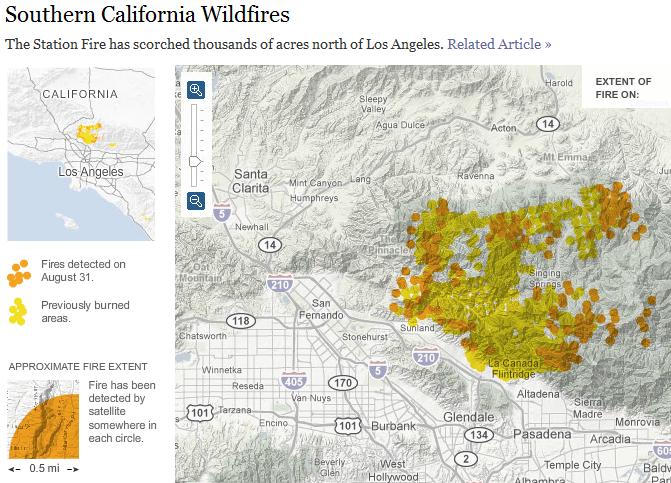From a series of news releases (all text, no pics, alas): UK aerial survey specialist Bluesky has launched a brand new digital map layer accurately modelling the location and extent of trees and their proximity to buildings. Designed as a tool to aid insurance assessors, property developers and Local Authority Planners, ProximiTREE details the exact spatial location and height of individual trees together with the circumference of its canopy. From this information a determination can be made of the root extent and the potential impact on either existing or proposed properties.
They plug this product for its use in avoiding building subsidence, but in fire-prone Cali, we could use it to look at defensible space and risk.
They also provide a range of good downloads, including sample data and software for your enjoyment.
 A gripping watch: this animation focuses on the Russian fires, as seen from various angles. It shows carbon monoxide concetration at altitude 18,000 ft (5.5 km) as measured by the Atmospheric Infrared Sounder (AIRS) instrument on NASA's Aqua spacecraft.
A gripping watch: this animation focuses on the Russian fires, as seen from various angles. It shows carbon monoxide concetration at altitude 18,000 ft (5.5 km) as measured by the Atmospheric Infrared Sounder (AIRS) instrument on NASA's Aqua spacecraft.
 If you love detailed spatial data and/or the bay area, I HIGHLY recommend downloading and exploring the readily available
If you love detailed spatial data and/or the bay area, I HIGHLY recommend downloading and exploring the readily available 